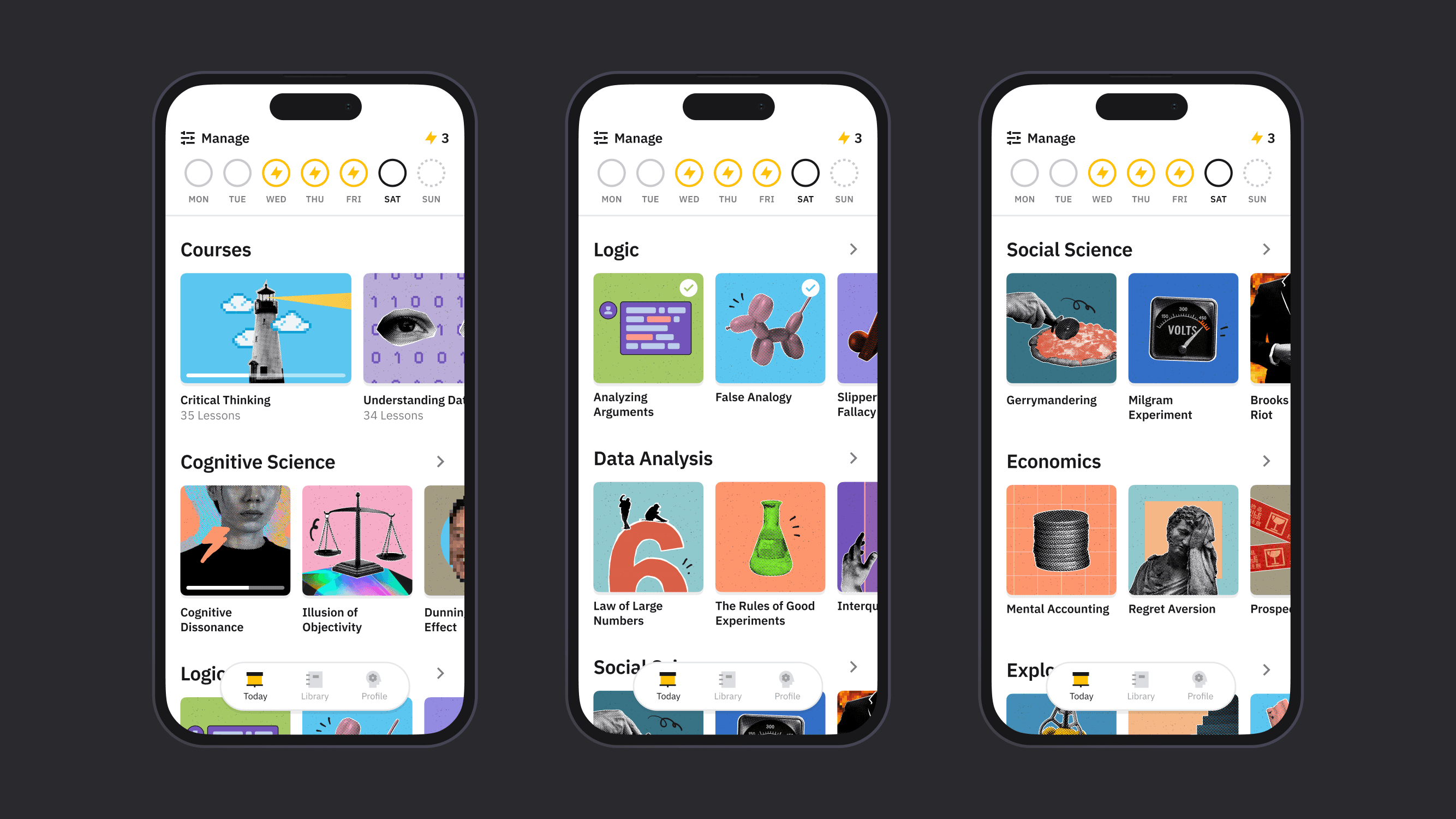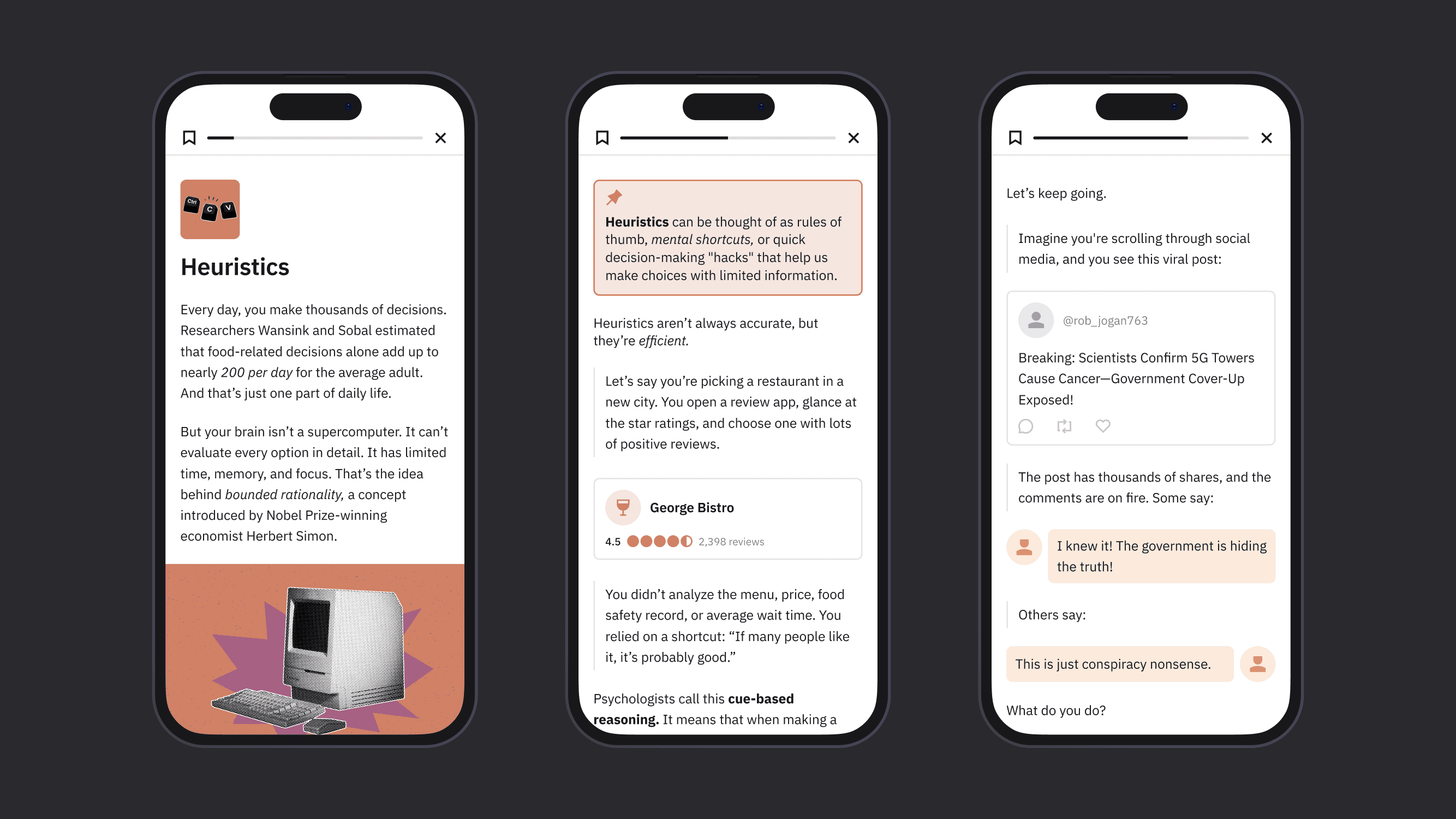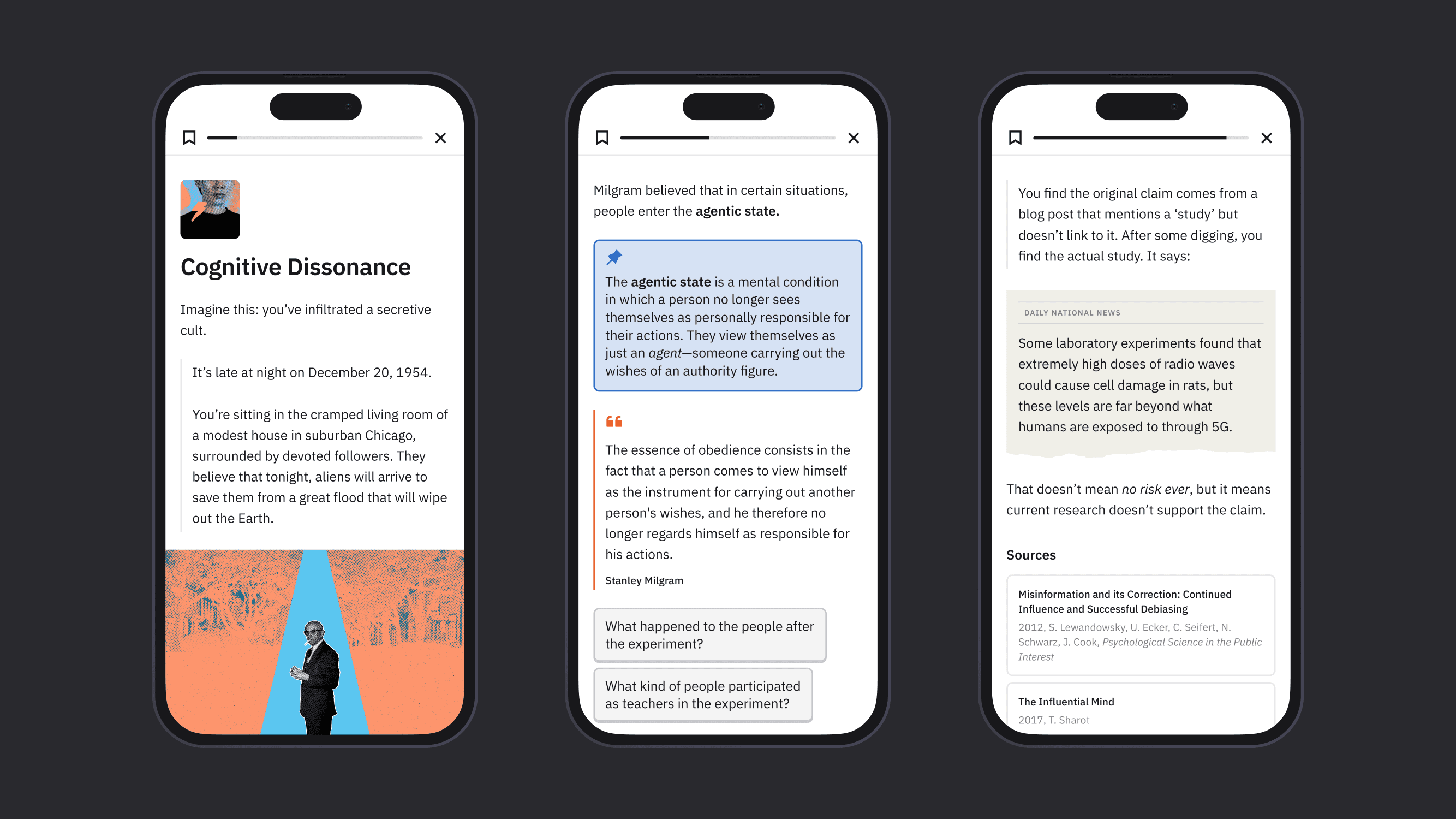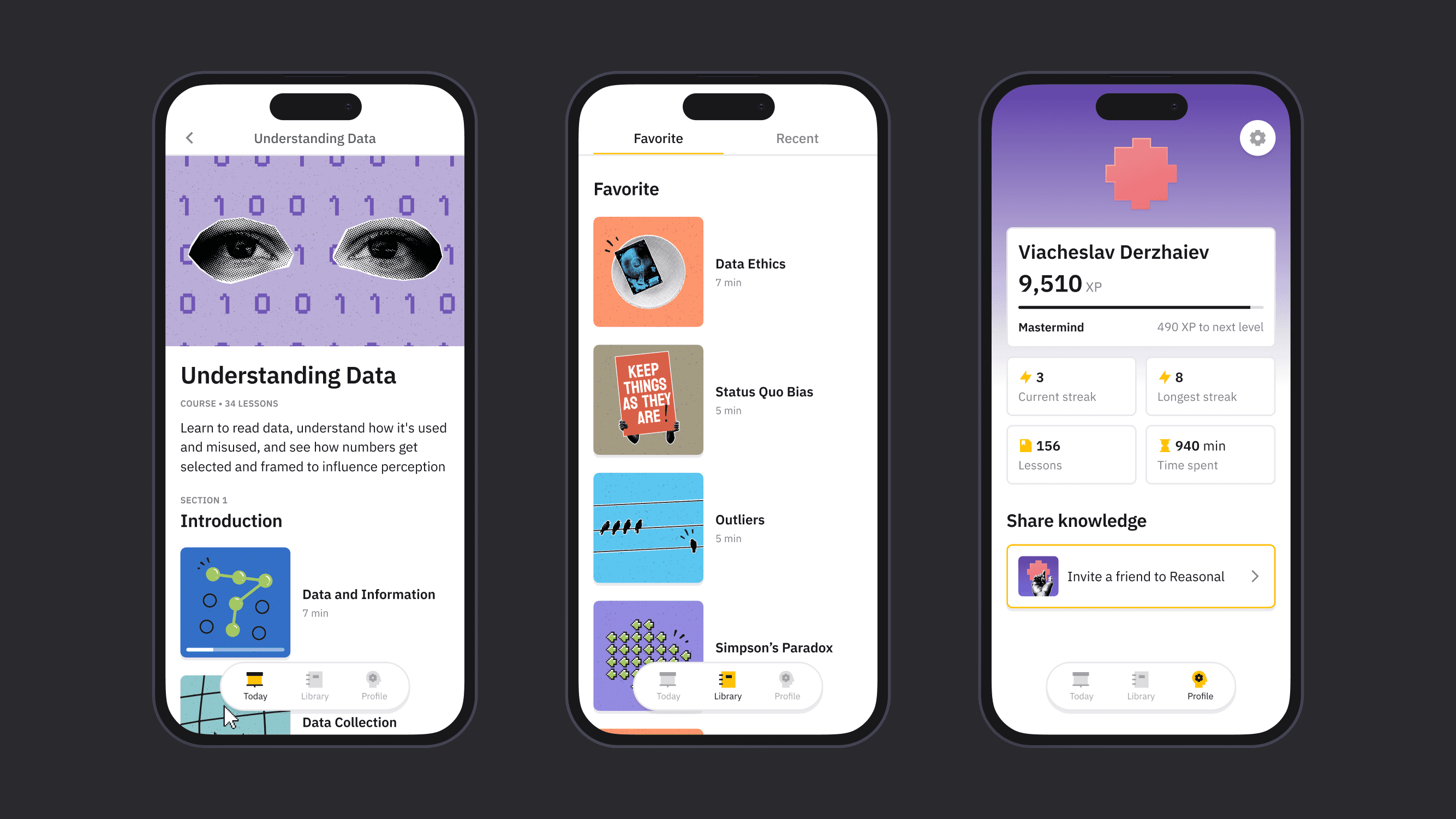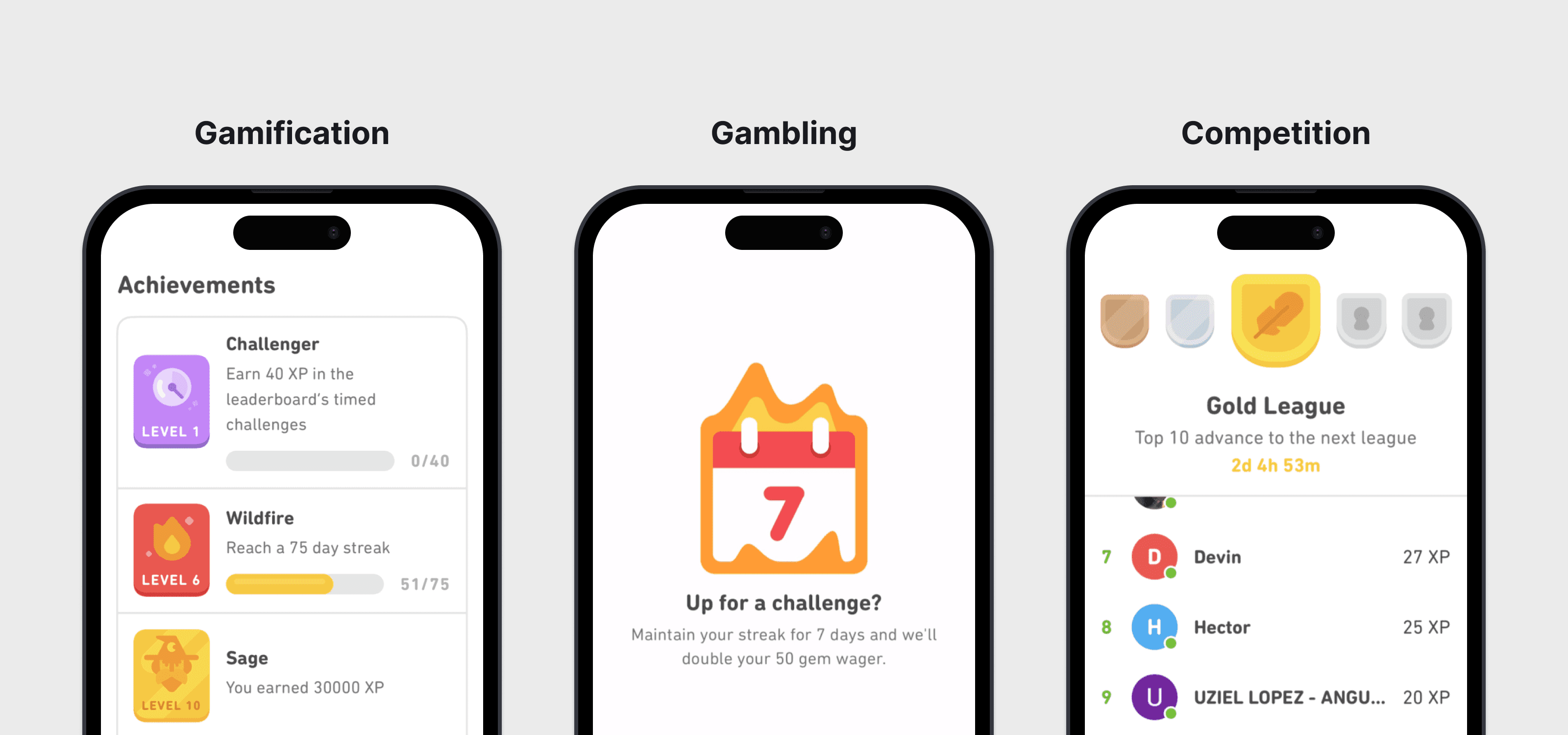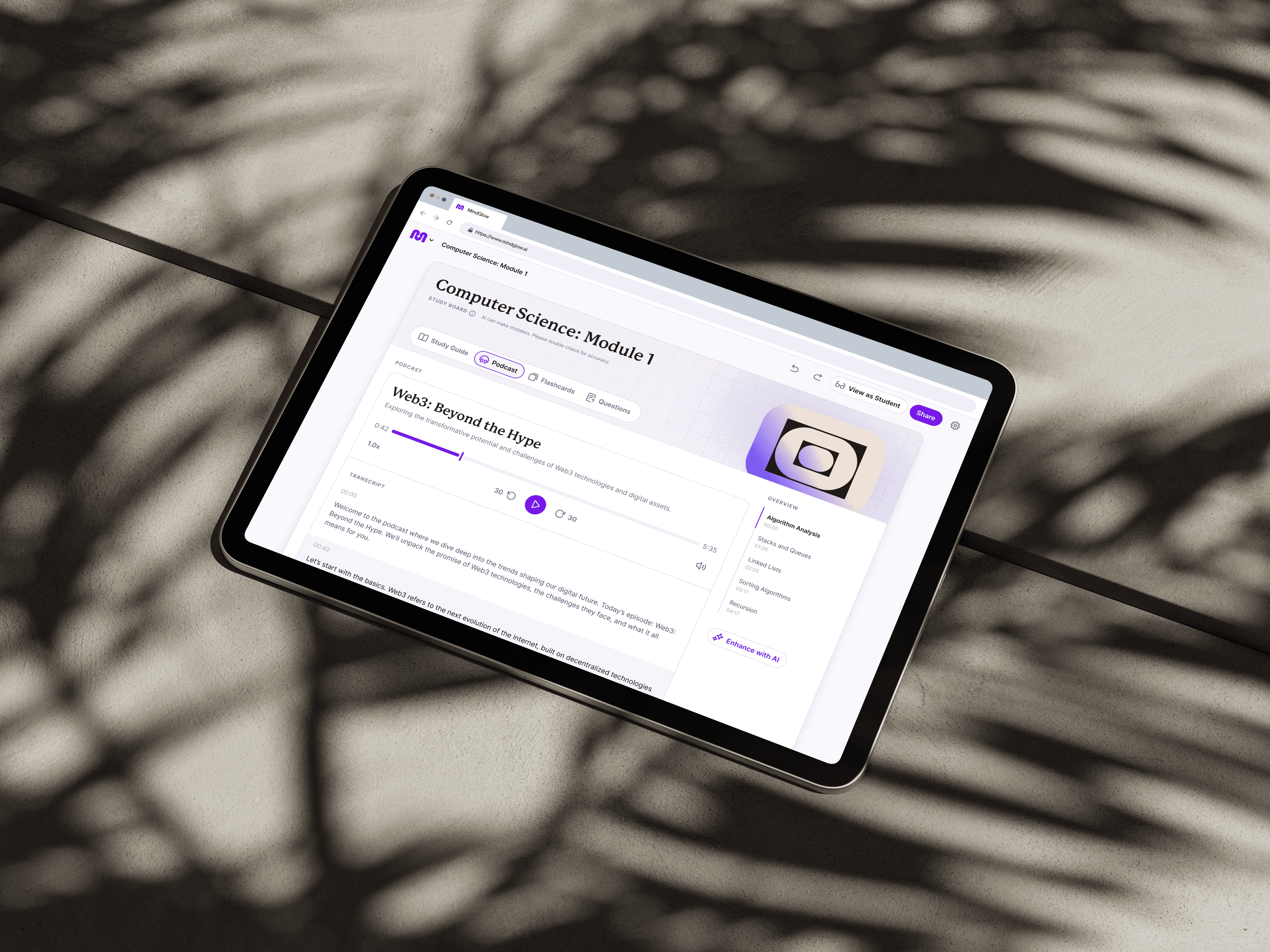Reasonal | 2024 | reasonal.co | App Store
Mobile app for Reasonal
Reasonal is a mobile app that teaches critical thinking in a fun and interactive way. The task was to create "Duolingo for critical thinking skills".
I'm a founder of Reasonal. I led all the product design work, the development of product architecture and user experience, creating key concept and user interfaces. The app is now available in the Apple App Store.
My role:
UI/UX
Brand Identity
Design System
App Development
I have omitted and obfuscated some confidential information in this case study.
Process overview
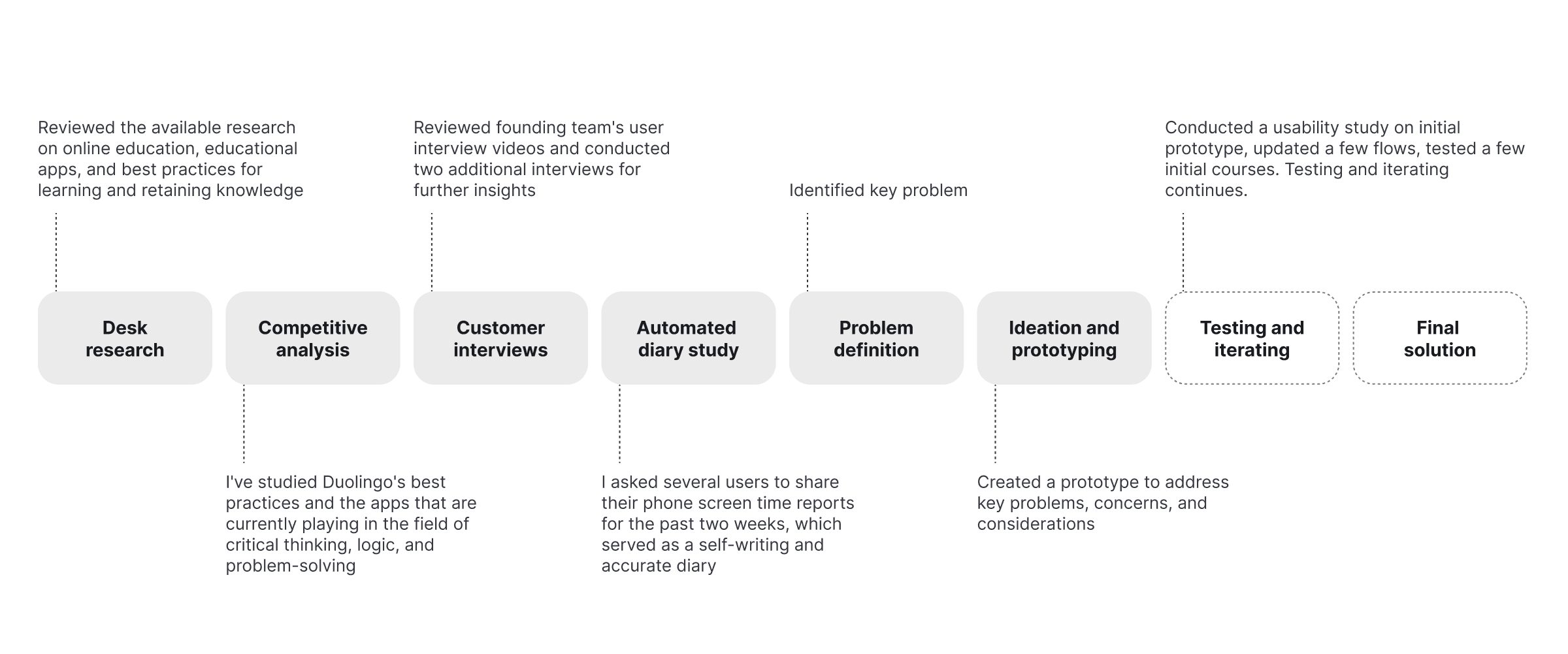
The challenge
Reasonal is a project I started with the goal of building a "Duolingo for critical thinking skills.” I believe misinformation and disinformation are among the most serious problems we face today, and AI is making both worse. Moderating everything is not sustainable, so people need tools that help them resist misinformation and disinformation.
Critical thinking and problem-solving are also among the most valuable skills employers are looking for in candidates today and will continue to be in demand in the future, according to the World Economic Forum.
Duolingo is a freemium mobile app and online platform where you can learn different languages in a bite-sized model. Over 500 million registered users use it, with 37 million active once a month.
Top-3
Problem-solving and critical thinking are ranked as one of top-3 skills for the future in the Future of Jobs Survey by World Economic Forum
91%
of employers are seeking problem-solving skills in candidates
Source: National Association of Colleges and Employers (NACE), World Economic Forum, 2020
Goal: to create an app that teaches critical thinking as effectively as Duolingo teaches languages
With 500 million users Duolingo was obviously doing something right. But in order to understand what exactly, I needed to get down to the root problem first. There were several questions that needed to be answered:
What problems does the educational app market have? And how does Duolingo solve them better than its competitors?
Are these principles applicable for teaching critical thinking skills?
Do people want to learn critical thinking—or are they satisfied with their current level of knowledge?
Constraints
There was no budget for video shooting and production, so all learning had to be text-based.
The problem
The first problem became apparent quickly: people want self-improvement in theory, but struggle with the daily practice. Workout plans and diet books are purchased with big expectations but are abandoned weeks later. Online course providers sell the convenience, the flexibility, the potential to learn anything from home — but rely on their students' willpower to stick through. And only 3-6% actually do. Educational apps have some of the lowest retention rates of any app category.
2.1%
Day 30 retention rate of educational apps worldwide in Q3 2022
3-6%
Completion rate of massive open online courses (MOOCs)
Source: Statista (2023), ResearchGate
Problem: educational apps have one of the lowest user retention rates out of all kinds of mobile apps
Key learnings
I have conducted several types of research in order to understand the audience and get best practices regarding efficient learning:
Competitive analysis: I've studied Duolingo's best practices and the apps that are currently playing in the field of critical thinking, logic, and problem-solving.
User interviews: I've conducted a few user interviews and made video recordings in order to get deeper into several topics.
Automated diary studies: I like to gather factual information about users' habits and contexts in a non-intrusive manner that is effortless for them, and which produces data that they cannot manipulate. Therefore, I've simply asked several participants to share screenshots of their screen time reports from their phones for the past two weeks. It's an ideal type of diary that writes itself, and is always factually correct.
Desk research: I have reviewed various research papers and literature that discuss the best practices in learning. One particularly helpful resource that I have come across is the book Make It Stick: The Science of Successful Learning authored by Peter Brown, who is a writer and former management consultant, and Henry Roediger and Mark McDaniel, who are professors of psychology at Washington University in St. Louis.
Gaming and gambling have a far greater capacity to form habits than learning
I explored Duolingo's retention strategies to discover how they managed to keep users engaged:
Gamification. Duolingo uses game elements to keep users engaged and motivated. Each user sets a daily goal, receives experience points as a reward for completing it, and is awarded achievement badges that trigger positive emotions from childhood computer games (e.g., medals, treasures, Ruby stones, swords, and bows). While these awards have no value outside of Duolingo, they can still motivate users.
Gambling. Duolingo has an in-app currency that has no value outside of the app. After completing several lessons and being rewarded for that with in-app currency, the app makes an offer to hold a Streak Wager—doubling your currency in case you have a seven-day streak. If you lose, you lose your wager. Duolingo confirmed on their blog that this experiment was a success and that it increased Day-7 retention by 14%. This experiment actually uses the sunk cost fallacy—the tendency to continue an endeavor once an investment in money, effort or time has been made—to help people make better decisions.
Competition. Duolingo has a league system, weekly standings and leaderboards. There are 10 leagues ranging from bronze to diamond. To advance to the next league, you must be among the top 10 users at the end of the week. You earn experience points for completing lessons and move up through the leagues when you have enough points. As you progress from one league to another, competition becomes more intense.
Many people felt their learning was disconnected from the real world and outdated. Critical thinking was seen as some vague theoretical concept with no immediate practical applications.
In interviews, I've found that many felt learning in general was often disconnected from reality and outdated. Whether online or offline, learners had difficulty applying what they've learned to real life.
Critical thinking was seen as some vague theoretical concept with no immediate practical applications.
I needed to clear up these misconceptions and show that critical thinking is a valuable skill that can be applied in many different contexts and can be invaluable in real life, I needed to "make critical thinking cool".
Learning is like working out. It's only effective when it's hard work.
During desk research, I learned several valuable lessons about learning effectiveness that I later implemented into the design. The authors of the Make It Stick: The Science of Successful Learning, Peter Brown, Henry Roediger and Mark McDaniel, emphasize the following practices that should be used to improve learning:
Generating connections between new material and related information in memory are essential for good retention. For example, a student studying for a history exam can make connections between the events they are learning and current events happening in the world, something they already know and care about.
Contrary to popular belief, focusing on one topic at a time is not the best way to learn. Instead, interleaving—spacing learning, switching between activities and topics over time—is proven to be more effective. It boosts long-term memory and consolidation of memory into knowledge.
Learning has to be active and effortful to be efficient. Effortful recall of previously learned information a couple of days after the training, makes your brain tag it as important enough to keep. Generation (attempting to answer a question before knowing what the answer is) is also an effective but often overlooked strategy. Students learn more when they are made to solve a problem themselves instead of being given the solution. Making and correcting mistakes improves retention of skills.
The solution
After gathering all the learnings, I came up with a set of principles, concepts and features that I implemented in the design.
Gamification. Experience points for course progress and thematic achievements.
Competition. Thematic challenges and leaderboards.
Plain language. I explain concepts in a way that I might explain them to a friend.
Practical application. I emphasize the practical meaning of our concepts and how to apply them in real-life situations. I include lots of examples, problem solving, and hands-on activities in each chapter, so people rarely read long blocks of text, but rather see examples, solve problems, and do activities.
Personalization. During onboarding, I'll learn about each student's interests and tailor their experience accordingly. This influences the quotes they see on the Home screen, the analogies used in lessons, and some of the practice questions where it could be naturally implemented (I avoid making it look forced or far-fetched).



